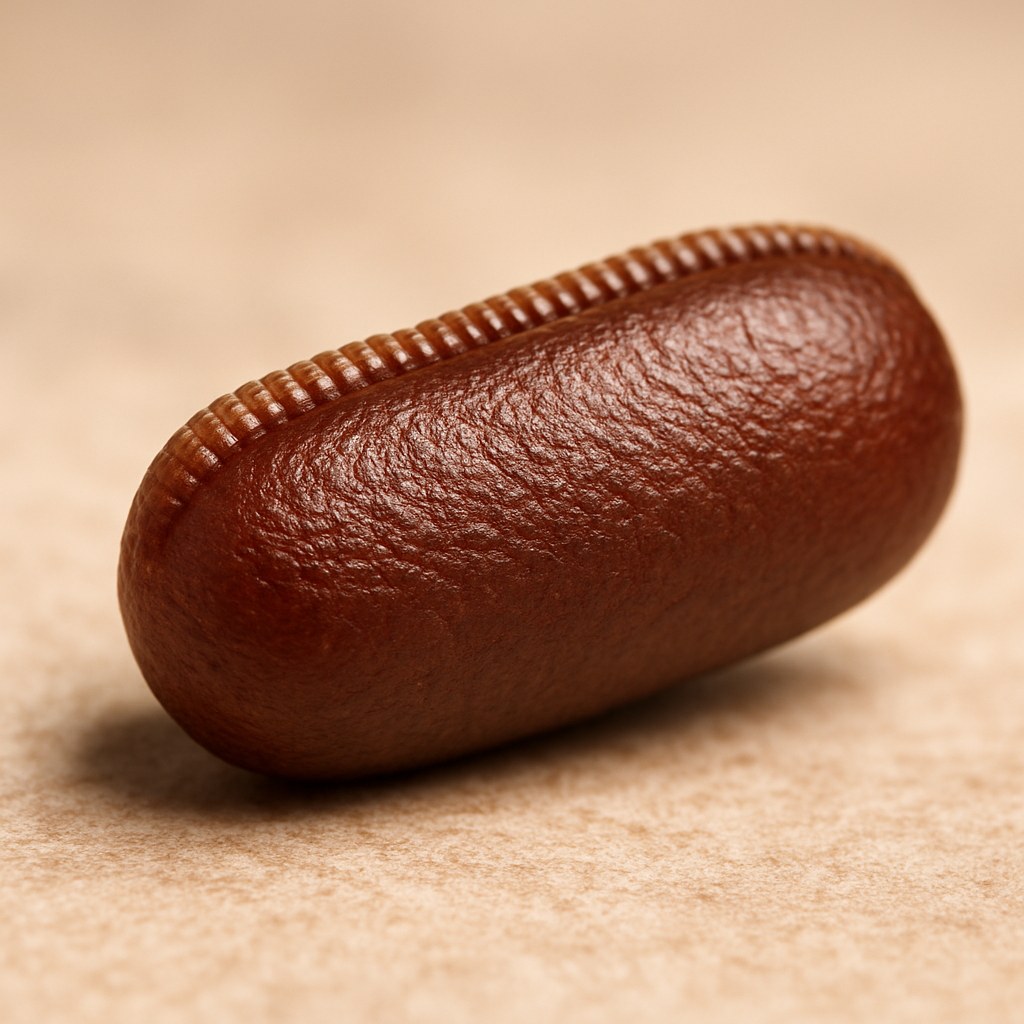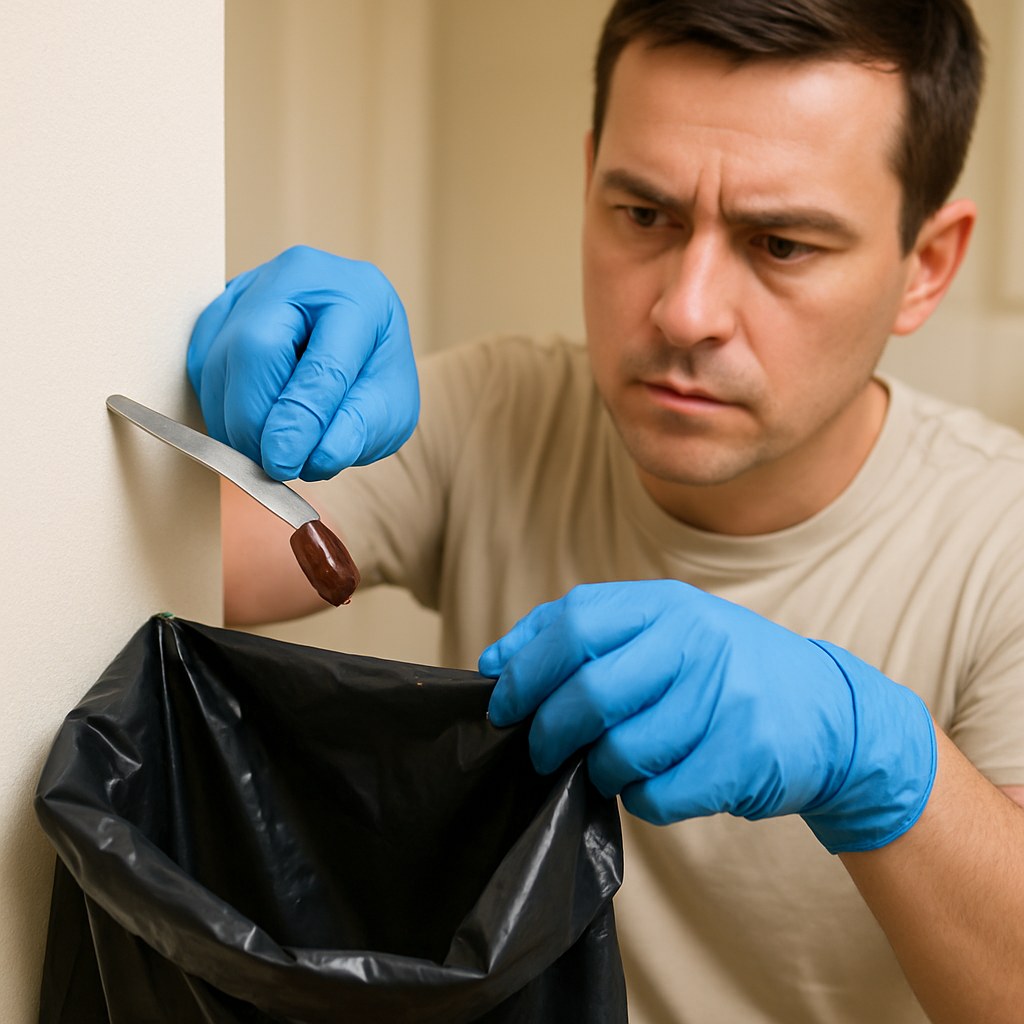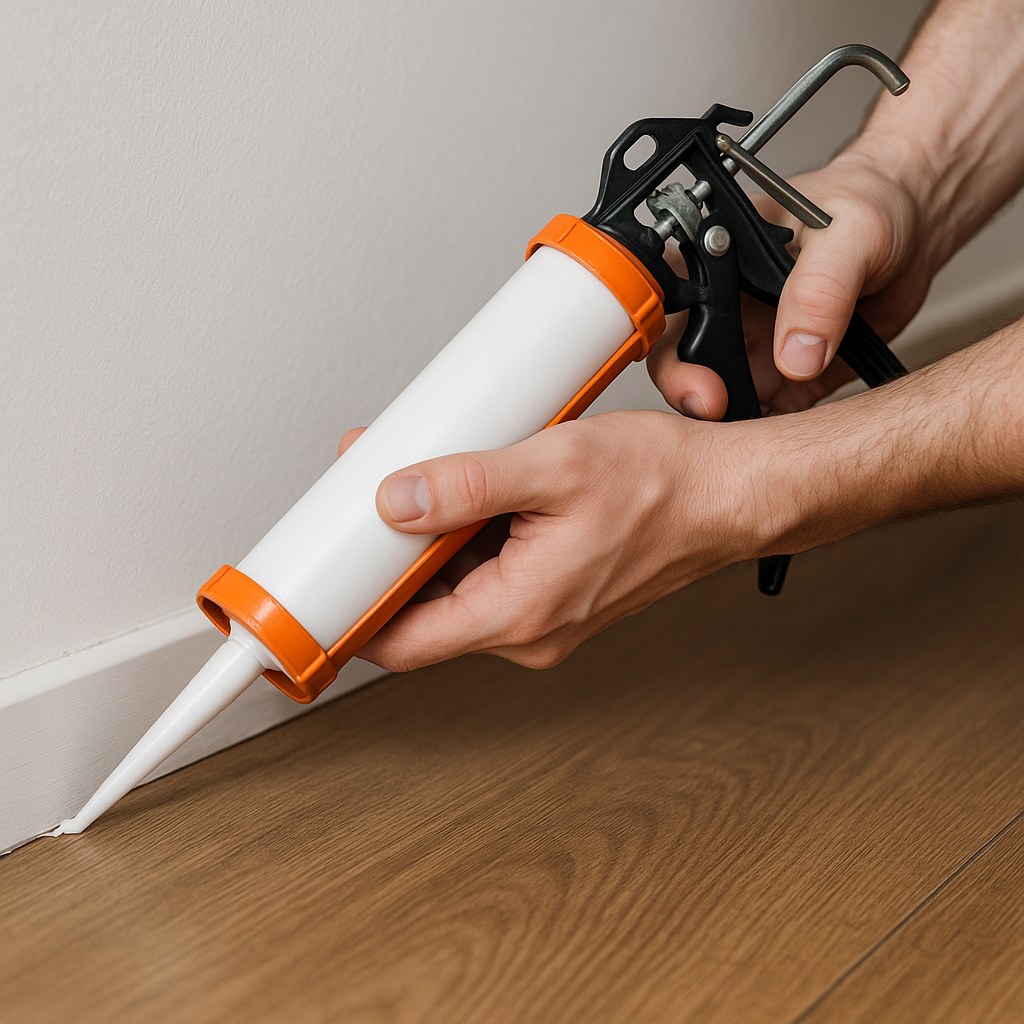There are few things more unsettling than discovering signs of pests in your home. And when you find what looks like a tiny, dark seed pod tucked away in a corner, your mind might jump to the worst conclusion: cockroach eggs. Finding a single cockroach is bad enough, but finding its eggs means you have a reproducing population setting up shop in your space.
The sight of a cockroach egg case, known as an ootheca, can feel overwhelming. But don't panic! Taking swift and proper action can stop a full-blown infestation in its tracks. The key is to act quickly, because cockroaches are incredibly prolific breeders. According to the Environmental Protection Agency (EPA), a single German cockroach egg case can contain between 30 and 48 eggs. When you consider that one female can produce multiple egg cases in her short life, you can see how a small problem can escalate fast.
The good news is that you have the power to solve this problem. In this guide, we'll walk you through everything you need to know, just like a friendly expert on the other end of the phone. We'll cover how to identify cockroach eggs, the right way to remove them, and most importantly, how to prevent them from ever coming back.
 on a baseboard)
on a baseboard)
First Things First: What Do Cockroach Eggs Look Like?
Before you can tackle the problem, you need to be certain about what you’re dealing with. Cockroaches don't lay single eggs; they produce an ootheca, which is a hardened, protective case that holds many eggs.
Here’s what to look for:
- Appearance: A cockroach ootheca often looks like a small, leathery purse or a dried bean.
- Size and Shape: They are typically small, ranging from 5 to 10 mm long, and are oblong or capsule-shaped.
- Color: The color can vary from a light tan or reddish-brown to a dark, almost black, brown, depending on the species and age of the ootheca.
- Location: Roaches are masters of hiding. They deposit their egg cases in dark, warm, and humid places that are close to food and water. Common hiding spots include:
- Behind or under appliances like refrigerators, stoves, and microwaves.
- Inside cracks and crevices in walls, baseboards, and cabinets.
- In cluttered areas like pantry shelves, basements, or storage boxes.
- Under furniture and along windowsills.
A Crucial Safety Warning: Sometimes, what you find might not be a cockroach egg case at all. If the structure you see looks like it's made of paper, has a honeycomb pattern, or contains visible larvae in cells, you might be looking at a wasp nest. Do not attempt to remove this yourself. Stinging insects require professional handling, so your first call should be to a licensed pest control expert.
Your Step-by-Step Guide to Removing Cockroach Eggs
Once you've confirmed you're dealing with cockroach oothecae, it's time to get to work. Follow these steps carefully to ensure you remove them safely and effectively.
Step 1: Gear Up and Assess the Area
Preparation is key to doing this right and preventing the spread of potential germs.
- Protect Yourself: Before you begin, put on a pair of disposable gloves. This keeps your hands clean and prevents any direct contact with the oothecae.
- Secure the Area: Make sure children and pets are kept away from the area until your cleanup is complete.
- Investigate with a Flashlight: Grab a good flashlight and shine it directly on the egg cases and the surrounding areas. Observe their size, shape, and how many you can see.
- Take Notes: Note the surface where you found them (e.g., wall, floor, inside a cabinet). Also, look for contributing factors nearby—food crumbs, moisture from a leaky pipe, or entry points like gaps under a door or around a window frame. This information will be crucial for the prevention stage.
Step 2: Safely Remove and Dispose of the Egg Cases
Physical removal is the most effective way to eliminate the immediate threat.
- Clear the Space: If the oothecae are behind furniture or appliances, carefully unplug any devices and pull the items away from the wall to give yourself clear access.
- Scrape and Collect: Hold a trash bag open with one hand. Using a stiff paper towel with the other, carefully scrape the egg cases off the surface and directly into the bag. Be gentle but firm to avoid crushing the case, which could potentially scatter the eggs.
- Seal and Remove Immediately: Once all visible egg cases are in the bag, tie it shut tightly. Don't leave it in your kitchen trash—take it to an outdoor garbage bin right away to prevent any nymphs from hatching inside your home.
- Clean the Spot Thoroughly: Mix a drop of dish soap with warm water. Dampen a clean paper towel with the soapy mixture and wipe down the exact spot where the eggs were located. This removes any lingering residue or bacteria.
- Rinse the Area: Use another paper towel dampened with plain water to rinse away any soap residue.
- Vacuum Everything: Use a vacuum with a crevice tool to go over the surrounding floor, windowsill, or shelf. This will pick up any tiny debris or egg fragments you might have missed.
- Final Cleanup: Remove your gloves, dispose of them in the trash, and wash your hands thoroughly with soap and warm water.

Knowing When to Call a Professional Exterminator
DIY removal is effective for isolated incidents, but it's important to recognize the signs of a larger infestation that requires professional help. Ask yourself this question from our diagnostic guide:
After cleaning, did you find more than 3 separate egg clusters, live insects (especially during the day), or cockroach droppings (which look like black pepper or coffee grounds)?
If the answer is yes, it's time to call a licensed pest control professional. Finding multiple egg cases or other signs of activity means the cockroach population is well-established, and they are likely hiding in wall voids, under floors, and other places you can't reach.
While DIY methods can handle the surface-level problem, an exterminator has the tools and expertise to eliminate the entire colony. According to Forbes Home, the average cost for a professional cockroach treatment is around $250, but it can range from $100 to $600. It's a worthwhile investment for your peace of mind and the health of your home.
Preventing a Future Invasion: How to Keep Your Home Roach-Free
Getting rid of the eggs is only half the battle. Now, you need to make your home as uninviting as possible for any future pests. Here are the essential prevention steps.
- Seal Up All Entry Points: Use a caulk gun to fill small cracks and gaps along baseboards, in corners, and around pipes under sinks. Roaches can squeeze through the tiniest openings, so a thorough sealing job is your first line of defense.
- Eliminate Their Food Supply: Roaches are opportunistic eaters. Wipe down kitchen counters, pantry shelves, and tables daily with a simple soap and water solution. Store dry goods like cereal, flour, and pet food in airtight containers instead of their original bags or boxes.
- Cut Off Water Sources: Pests are drawn to moisture. Fix any dripping faucets or leaky pipes immediately. Don't let water stand in the sink, and be sure to dry up any spills right away.
- Monitor for New Activity: Place a few sticky traps in the area where you originally found the eggs, as well as under your sink and behind the fridge. Check them weekly. If you start catching roaches, you know you have more work to do.
- Maintain a Clean Home: Vacuum all floors at least once a week to remove crumbs and other potential food sources. A clean home is a less attractive home for pests.
- Stay Vigilant: Every month, do a quick visual inspection of those common hiding spots with a flashlight. Catching a problem early is always easier than dealing with a full-blown infestation.

Take Control of Your Home Maintenance
Finding cockroach eggs is a stressful experience, but by following these steps, you can confidently handle the situation and protect your home from future invasions. You've identified the threat, removed it safely, and fortified your home's defenses.
For more expert advice, step-by-step DIY guides, and a direct connection to vetted professionals for the jobs that feel too big to handle on your own, download the Casa app today. We're here to empower you to manage and maintain your home with confidence, no matter what challenge comes your way.
 on a baseboard)
on a baseboard)
